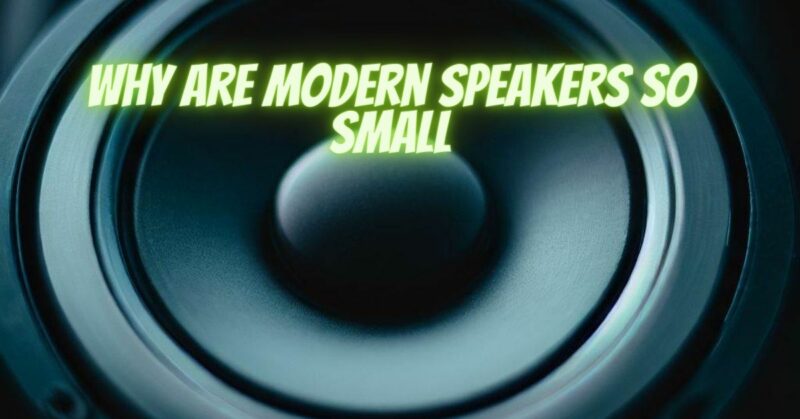If you’ve ever marveled at how modern speakers can deliver impressive sound quality despite their compact size, you’re not alone. The trend toward smaller speakers has revolutionized the audio industry, allowing for more portable and space-efficient audio solutions without compromising on performance. In this article, we’ll explore the reasons behind the downsizing of speakers and the technological advancements that have made it possible.
The Historical Perspective
To understand why modern speakers are smaller, it’s essential to look at the historical evolution of speaker technology:
- In the early days of audio, large, heavy, and bulky speaker cabinets were the norm. These cabinets housed massive drivers and complex acoustic designs to reproduce sound effectively.
Factors Driving Smaller Speaker Designs
Several factors have contributed to the shift toward smaller speakers:
- Advancements in Driver Technology:
- Speaker driver technology has made significant strides, allowing for smaller drivers to produce high-quality sound. Materials like neodymium magnets, lightweight diaphragms, and improved voice coil designs contribute to this progress.
- Miniaturization of Electronics:
- The development of compact and efficient electronic components, such as amplifiers and signal processors, has enabled the creation of integrated speaker systems that require less space.
- Portability and Convenience:
- Consumer demand for portable audio solutions, such as Bluetooth speakers and wireless headphones, has driven the need for compact speaker designs that can deliver impressive sound quality on the go.
- Aesthetic Considerations:
- Design trends favor sleek and minimalist aesthetics, encouraging the development of speakers that blend seamlessly with modern interiors.
- Acoustic Engineering:
- Advances in acoustic engineering and computational modeling have allowed manufacturers to optimize the performance of smaller enclosures, ensuring that they can still produce high-fidelity sound.
Types of Modern Small Speakers
Several types of small speakers have emerged to meet different audio needs and preferences:
- Bookshelf Speakers:
- Compact bookshelf speakers are designed for use in home audio systems and deliver excellent sound quality in a small form factor.
- Portable Bluetooth Speakers:
- Bluetooth speakers are highly portable and come in various sizes, making them ideal for outdoor use, travel, and on-the-go music.
- Soundbars:
- Soundbars are slim, elongated speakers designed to improve the audio experience of flat-panel TVs without the need for multiple bulky speakers.
- In-Wall and In-Ceiling Speakers:
- These speakers are installed directly into walls or ceilings, saving floor and surface space while providing quality audio.
Balancing Size and Sound Quality
While smaller speakers offer many advantages, there is a balance to strike between size and sound quality. Some considerations include:
- Speaker design, including driver size, enclosure type, and acoustic tuning, plays a crucial role in determining the performance of smaller speakers. High-quality components and engineering expertise are essential for achieving optimal sound.
The trend toward smaller speakers in the modern audio landscape is driven by a combination of technological advancements, consumer demand for portability and aesthetics, and the ability to maintain or even enhance sound quality in compact packages. As speaker technology continues to evolve, we can expect even smaller and more capable speakers that provide exceptional audio experiences in a wide range of applications.


